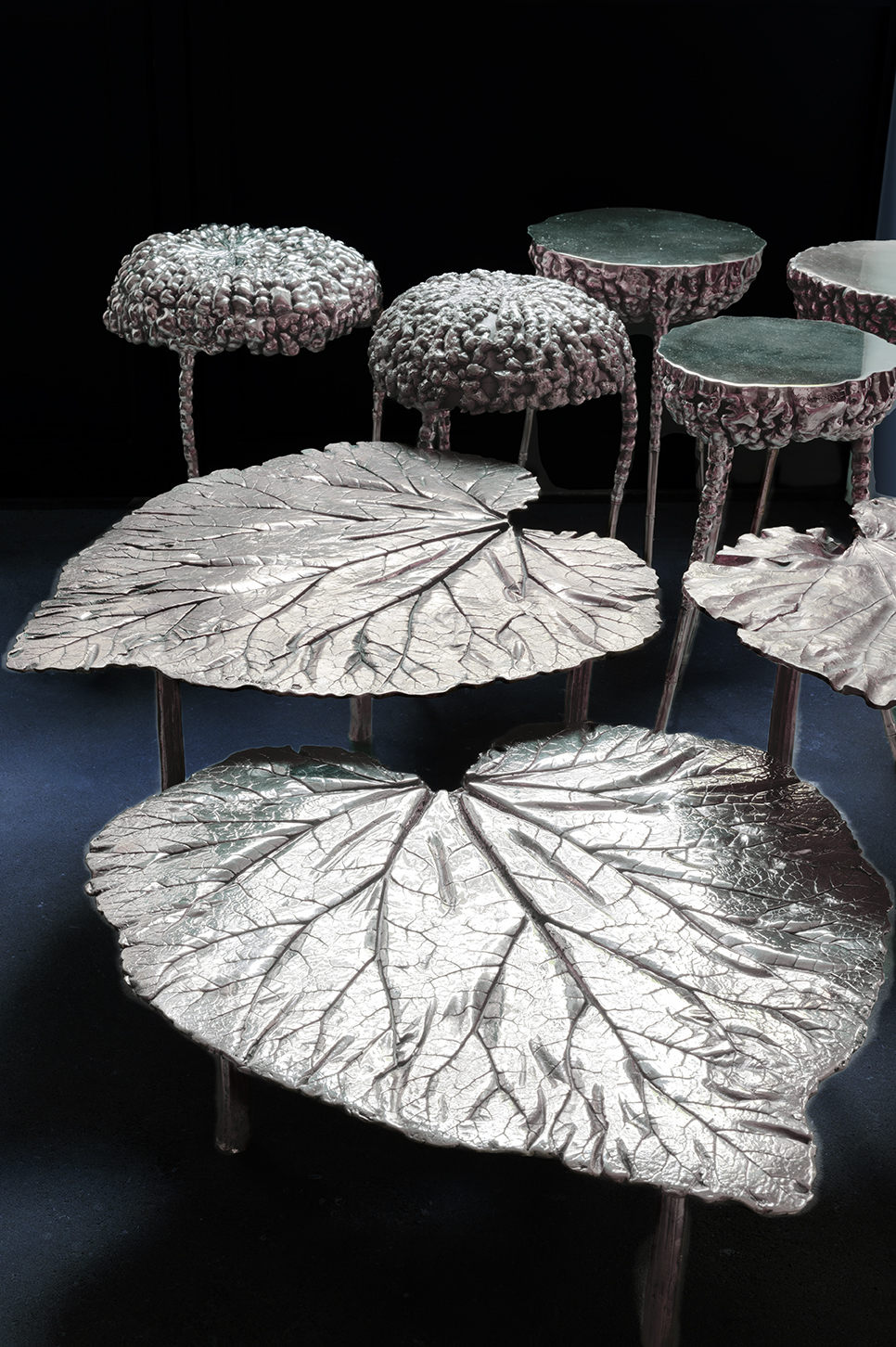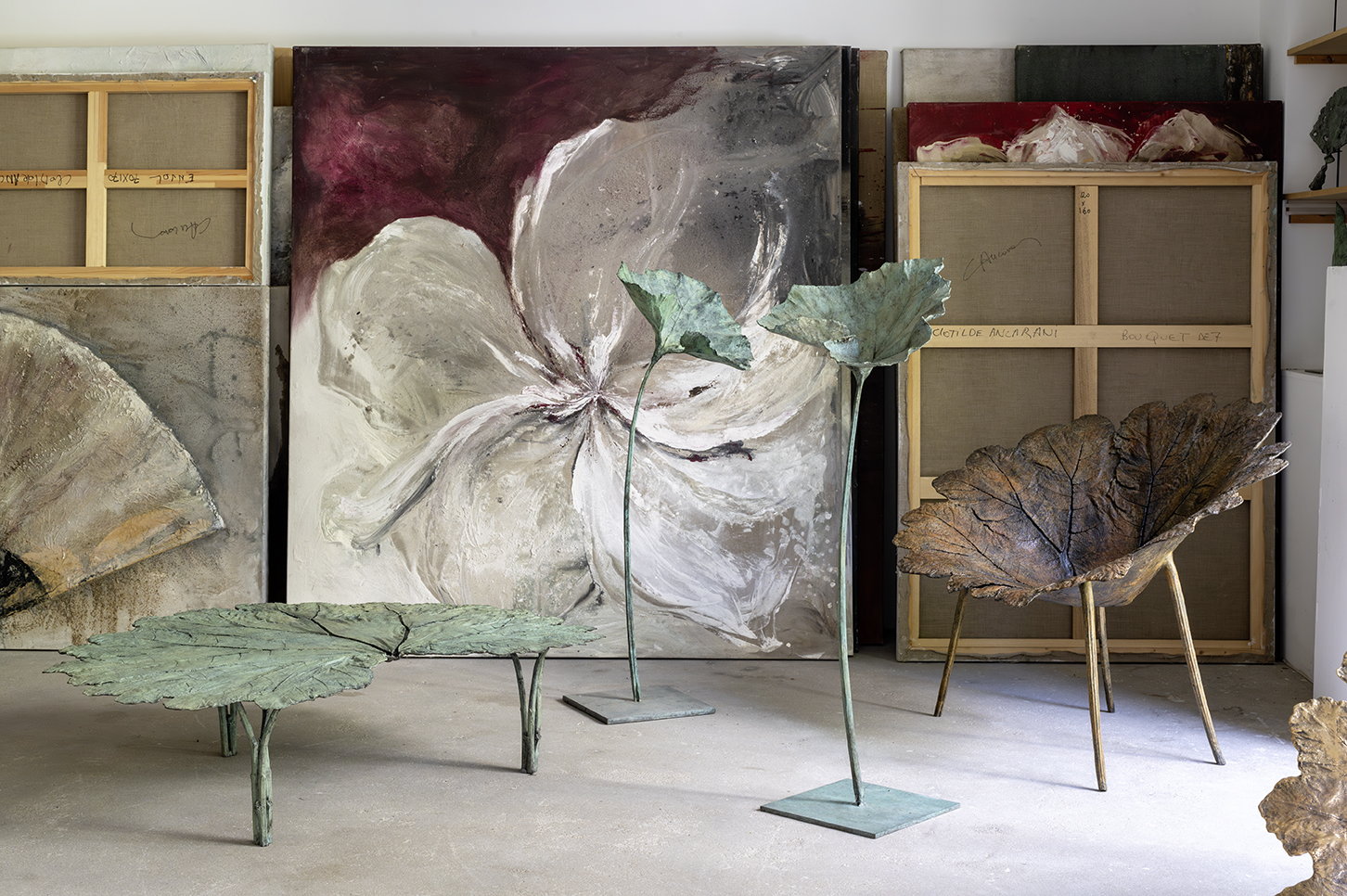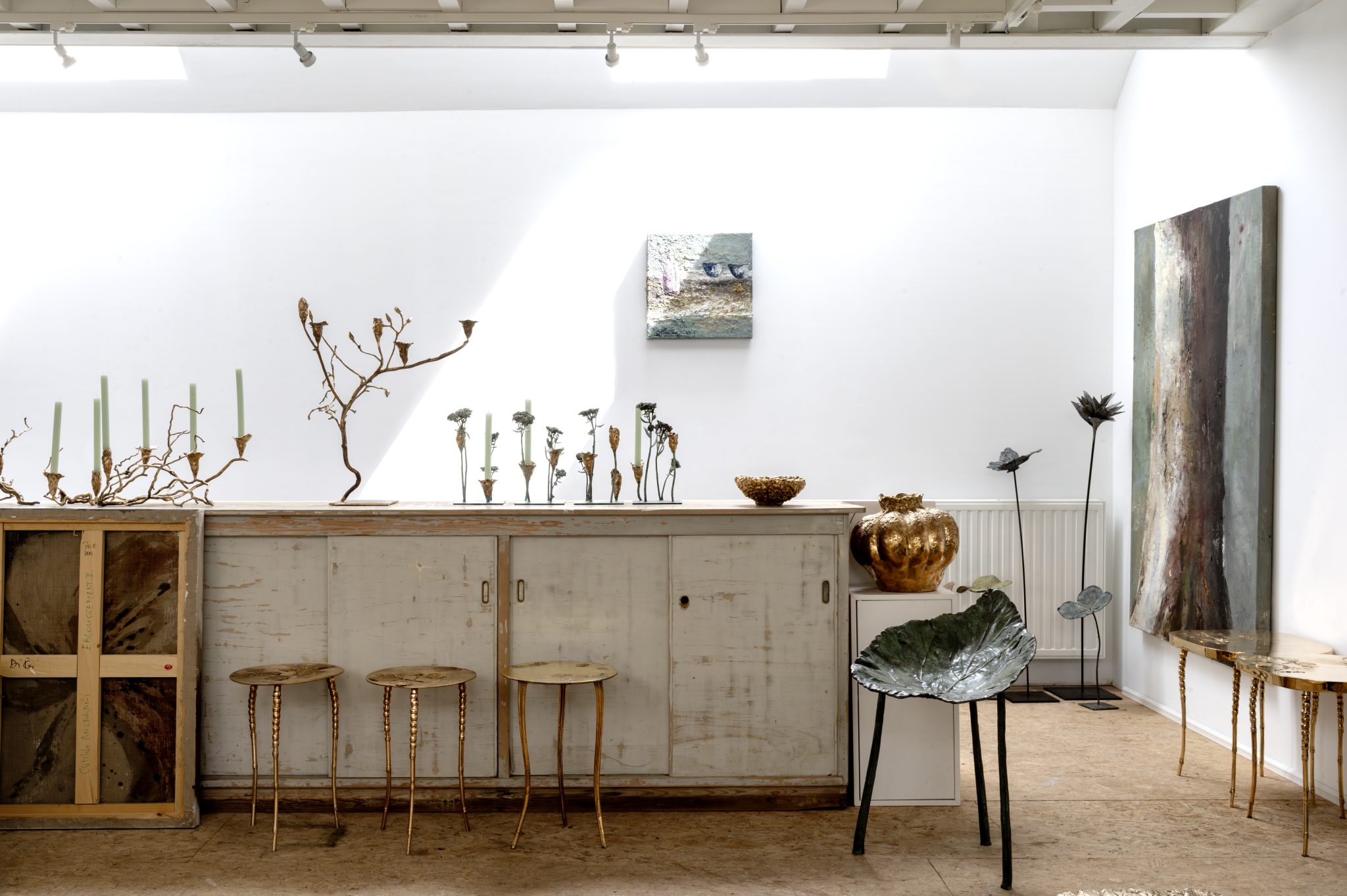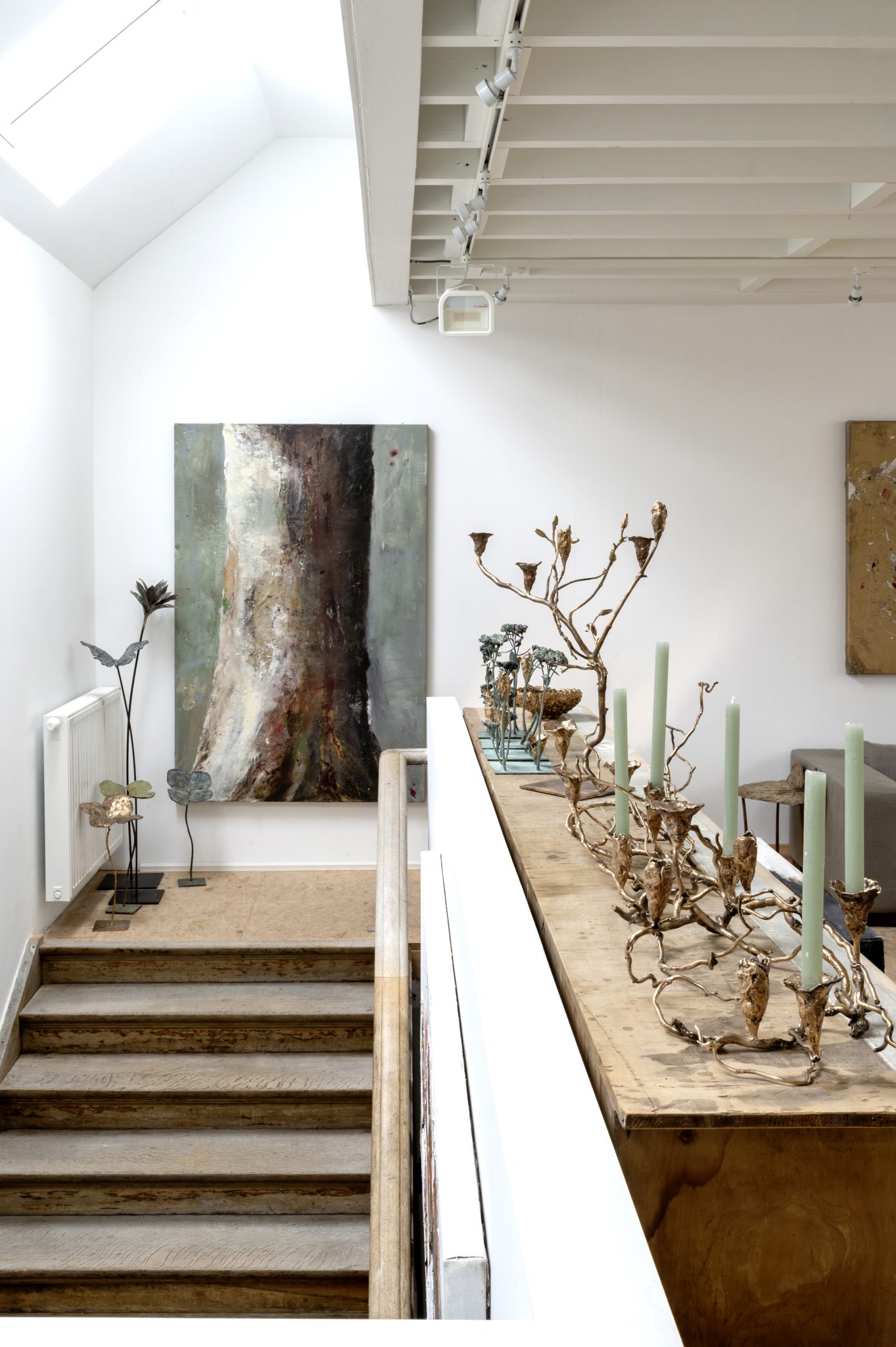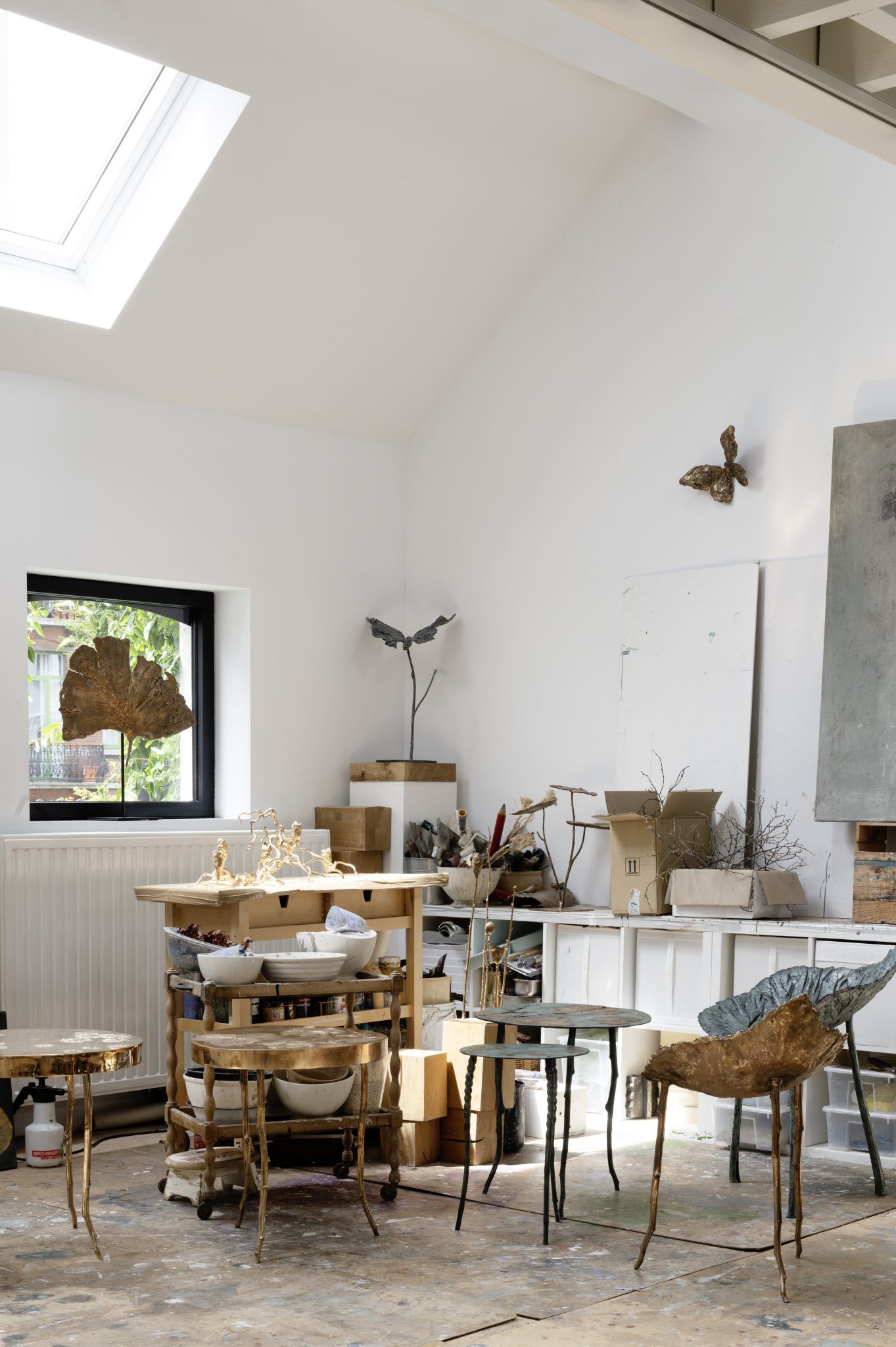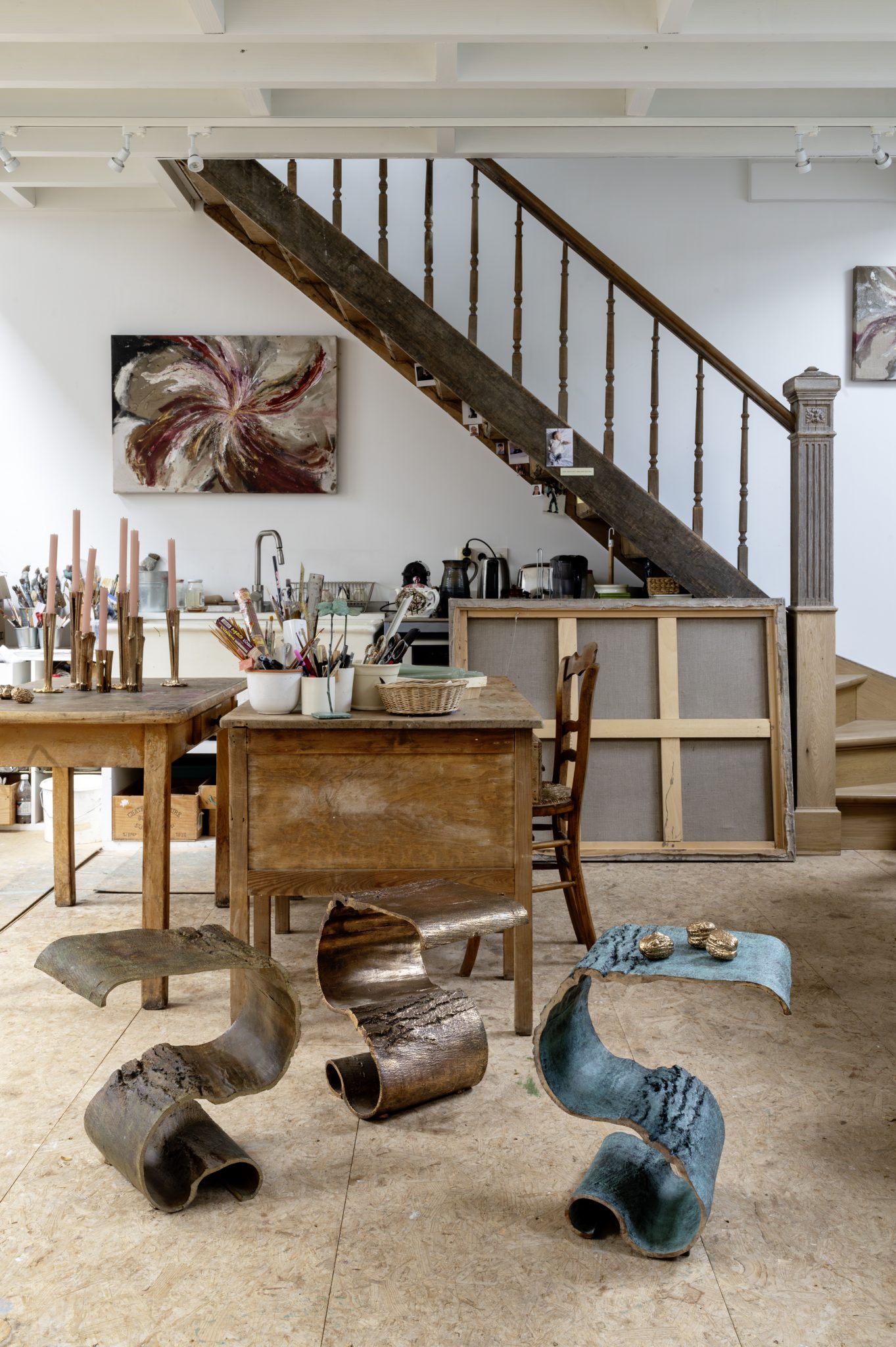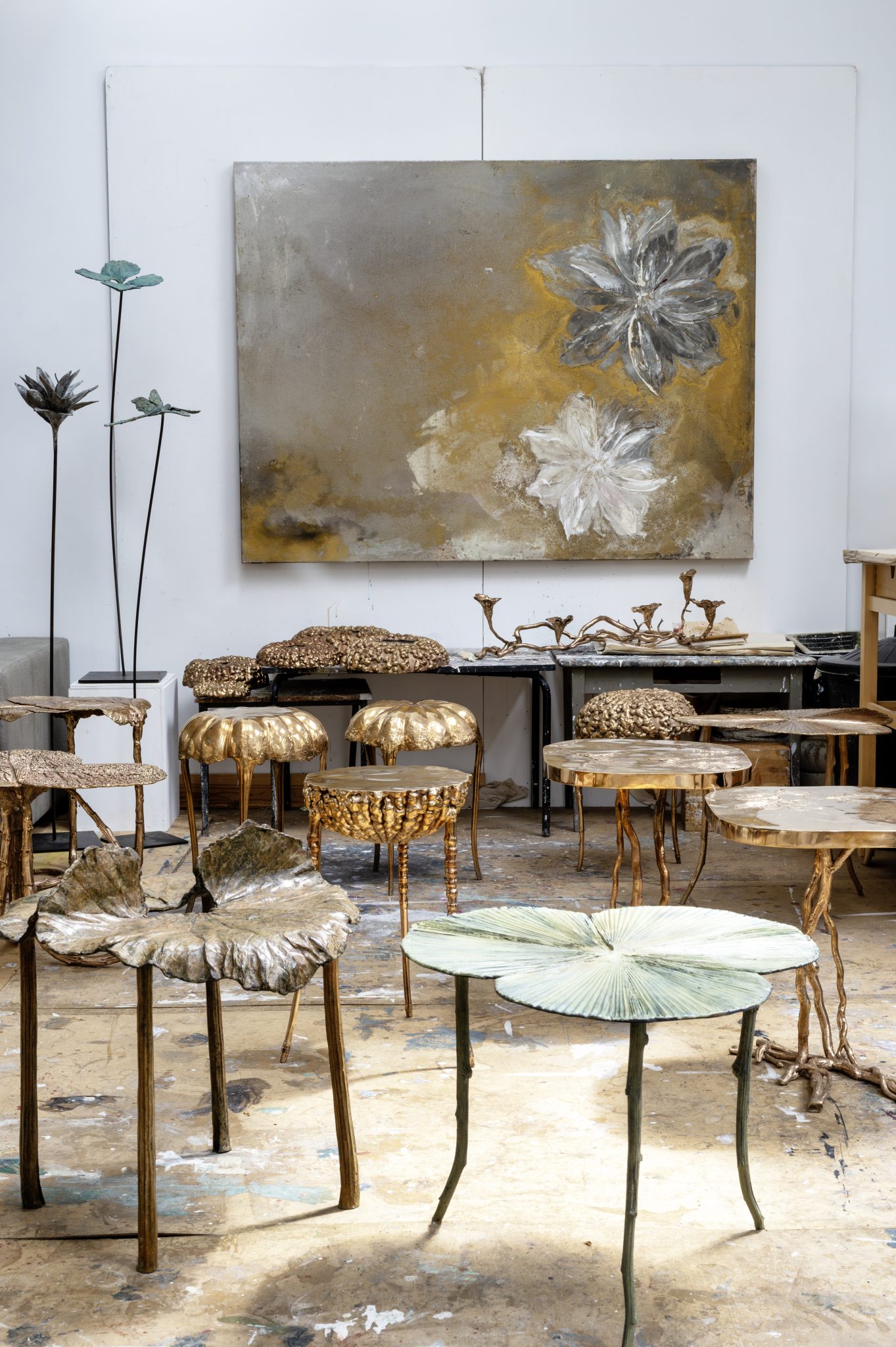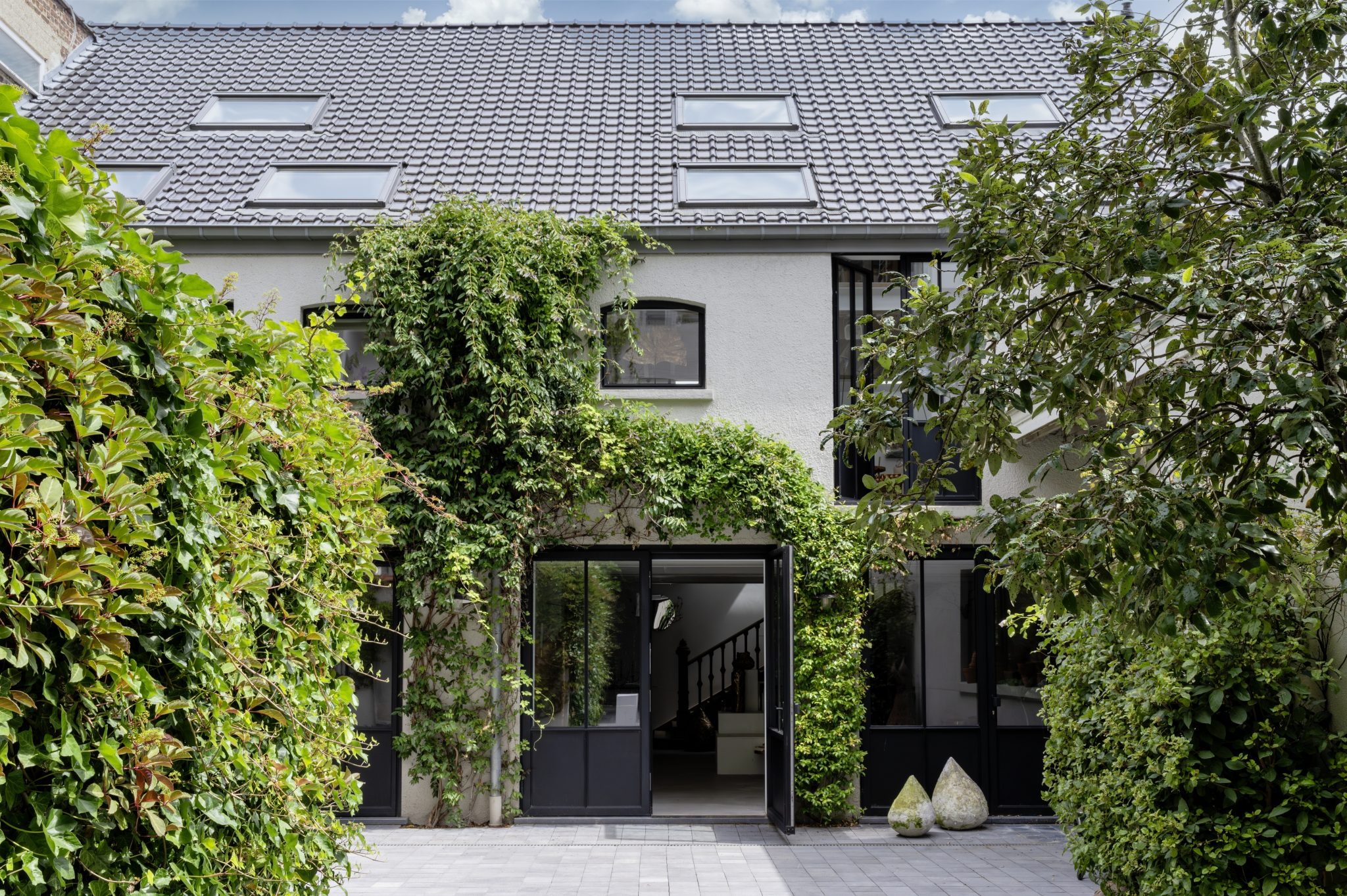Clotilde Ancarani draws the delicate essence of her ornamentation from the plant world, setting it in contrast with the strength and permanence of bronze. At the age of thirty, she chose to embark on a more artistic journey, immersing herself in sculpture and painting through studies at four different academies. From the very beginning, the botanical realm has been a constant source of inspiration, continually enriching and shaping her creative practice.
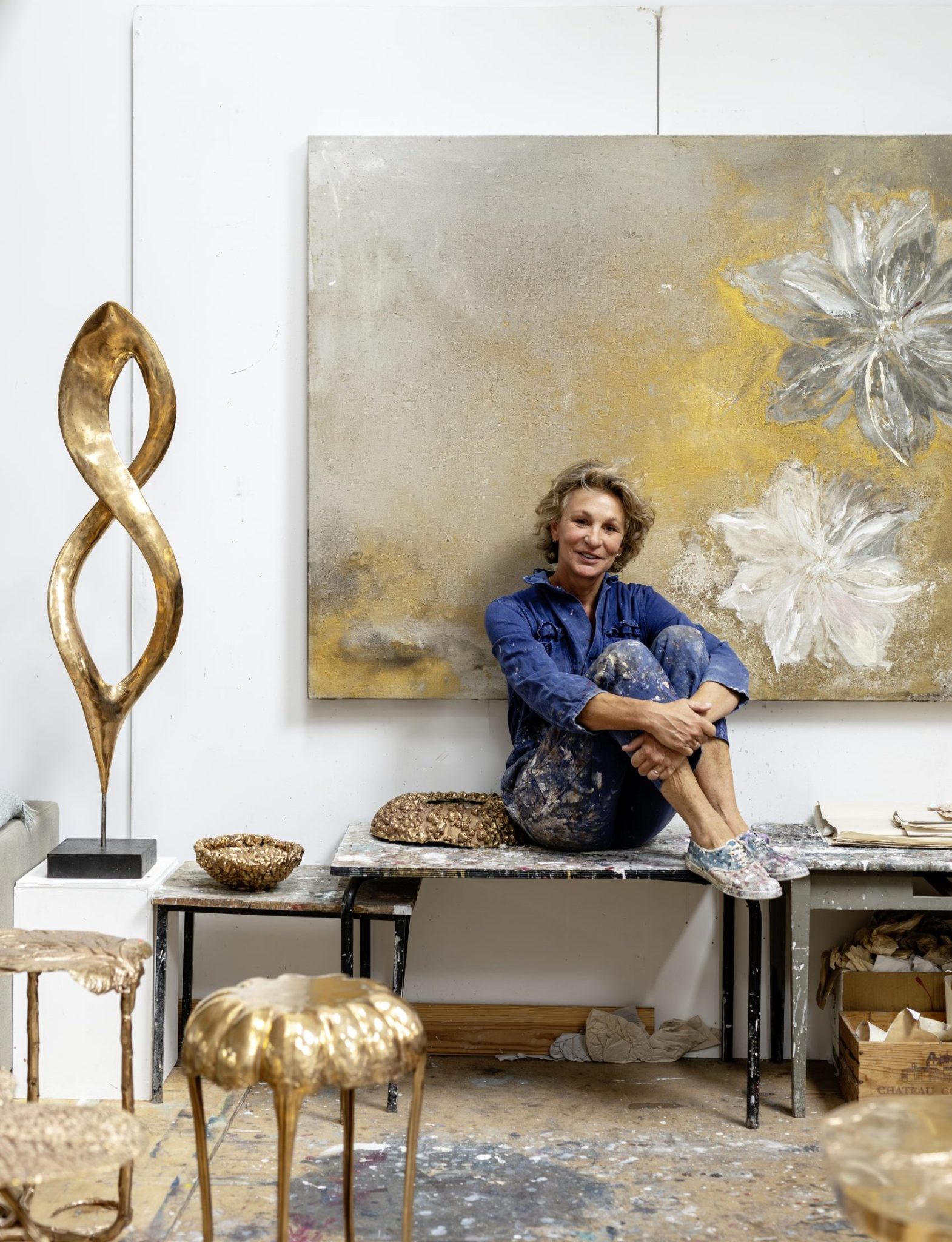
Clotilde Ancarani in her Brussels studio.
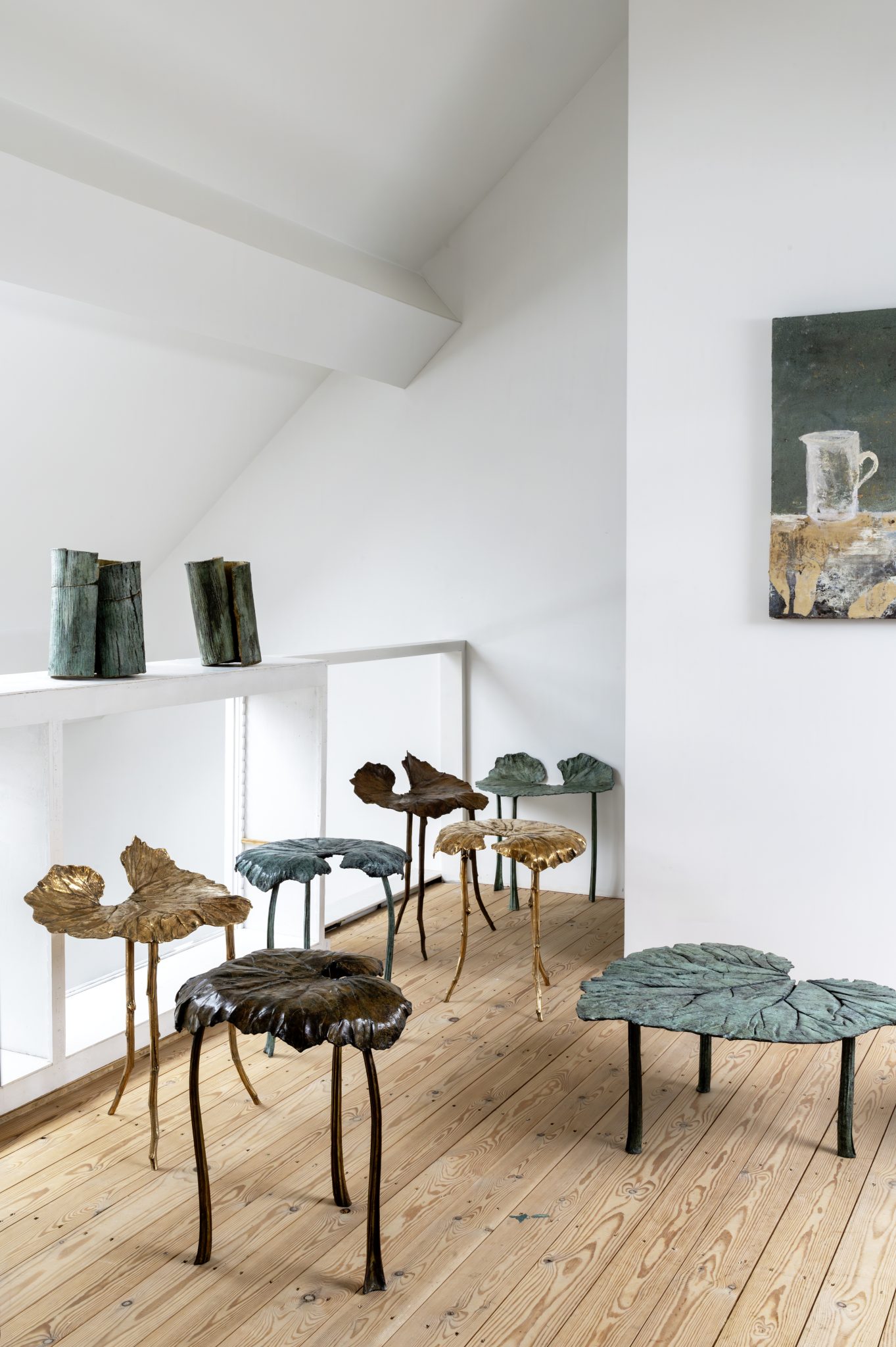
« I transformed my sculptural pieces with organic forms into small furniture and decorative objects. I created my first small table for my own home. Everything already exists in nature: the ribbed structure of a rhubarb stalk becomes the base of a candlestick, the generosity of a cabbage leaf, a seat… » — Clotilde Ancarani.
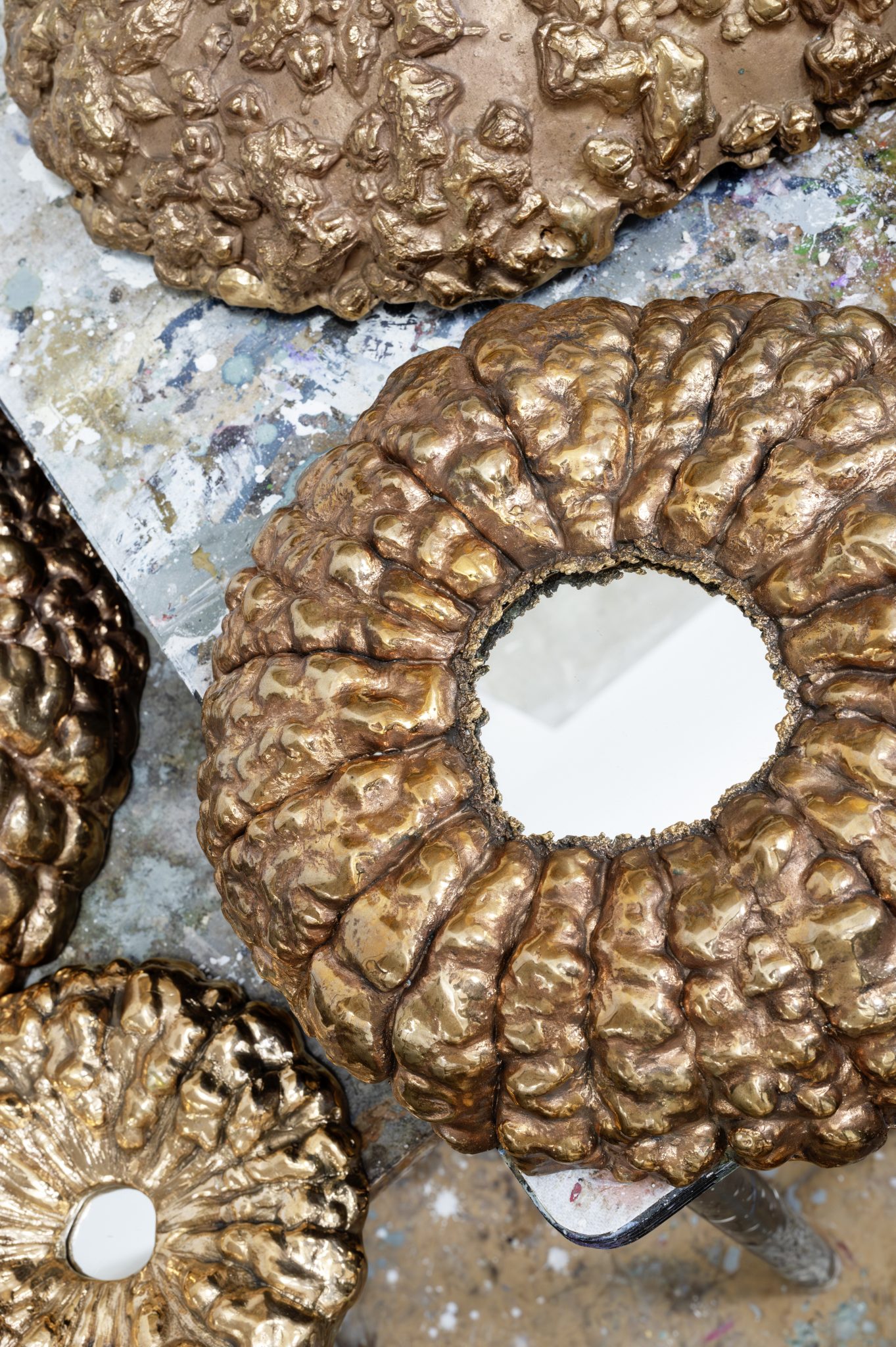
The artist has a particular fondness for exotic leaves, as exuberant as flowers, often from species native to India. All of Clotilde’s creations are the result of traditional bronze craftsmanship. ‘I collaborate with two foundries—one in Aalst and the other in Mons. Each artisan brings a unique expertise. For me, there’s no distinction between my functional pieces, sculpture, or painting, which I continue to practice using reclaimed sand.’
The initial form of each piece is shaped using the lost-wax casting process—a long and complex method. They are produced in very limited editions: eight copies and four artist’s proofs, like true works of art. Clotilde sculpts her design directly in wax or clay, then makes a silicone mold, into which two layers of wax are poured. Once reworked and reinforced with a metal structure and a refractory cement brick core, fitted with vents and a funnel, the hollow piece receives molten metal, heated between 1000°C and 1200°C.
‘It takes ten days to fire a piece, with the temperature rising and falling in stages. Larger pieces are made in two parts and then welded together.’ The natural gold color is achieved by polishing the bronze. To create patinated shades, the surface is heated with a blowtorch and worked with a brush using acids in successive layers. The final color is then fixed with wax.
Fearlessly treading the perilous path of creative freedom, Clotilde Ancarani masterfully channels the delicate yet powerful essence of nature. With precise and intentional gestures, she tames raw material with remarkable finesse, allowing a profound sensuality to emerge—one that celebrates a self-assured femininity tinged with quiet rebellion.
Her tables, seats, candleholders, and functional sculptures exude an ethereal elegance—light, fluid, and luminous—capturing the ephemeral beauty of movement and the play of light. Walking through her studio feels like entering a realm of enchantment. From her hands, pieces of varying forms and scales come to life, their surfaces dancing between tactile sensuality and startling realism.
Here, organic structures are reborn as domestic objects, liberated from the constraints of convention. This is the world Clotilde Ancarani conjures—a poetic reinterpretation of the natural world, where the familiar is rediscovered in strikingly new forms and contexts.
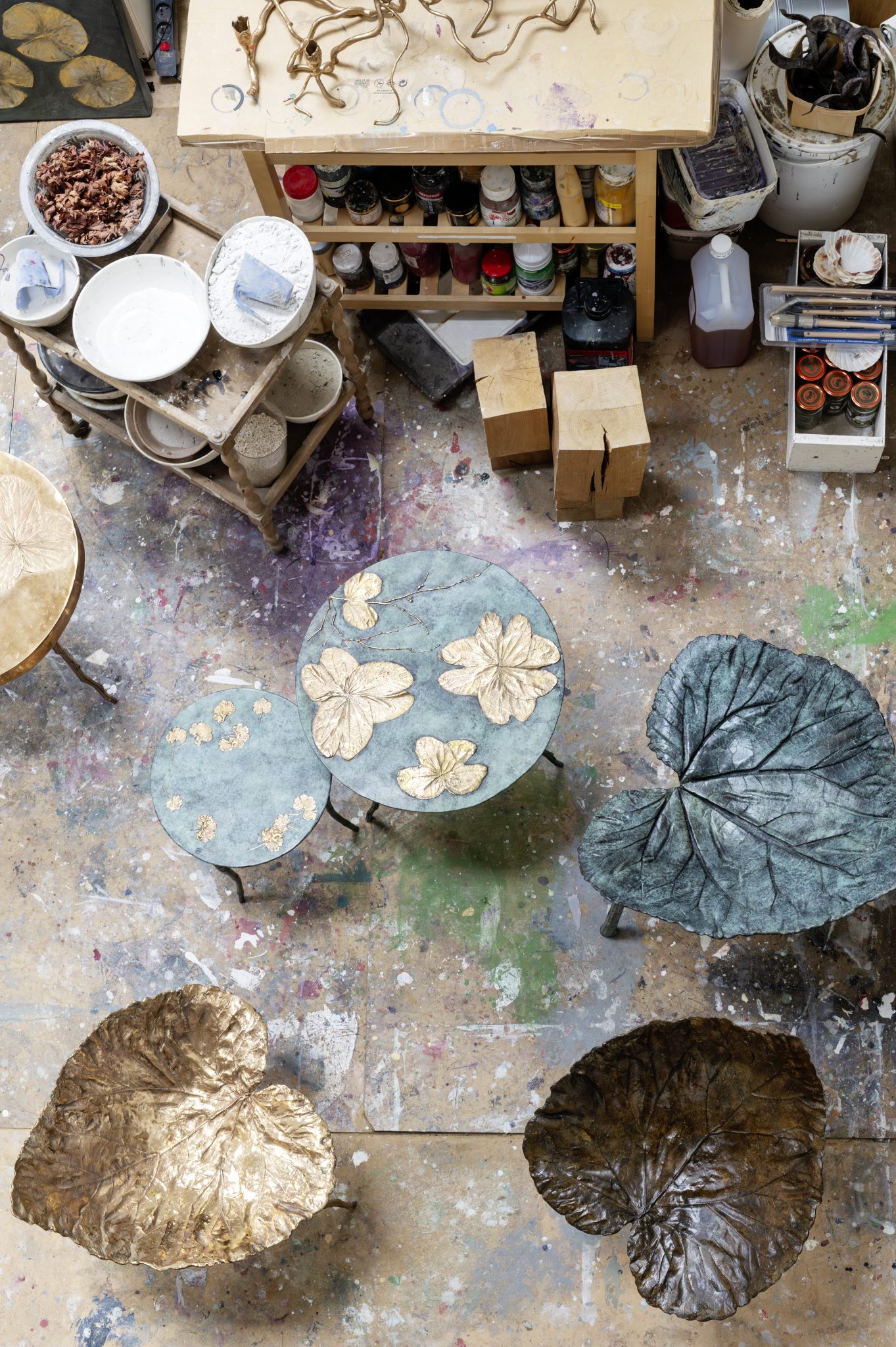
There is a visceral sense of life and time that emanates from Clotilde Ancarani’s bronze objects. Using a method that leans heavily on improvisation, the process is high-touch, resulting in an instinctively controlled balance — Mélissa Paul.
